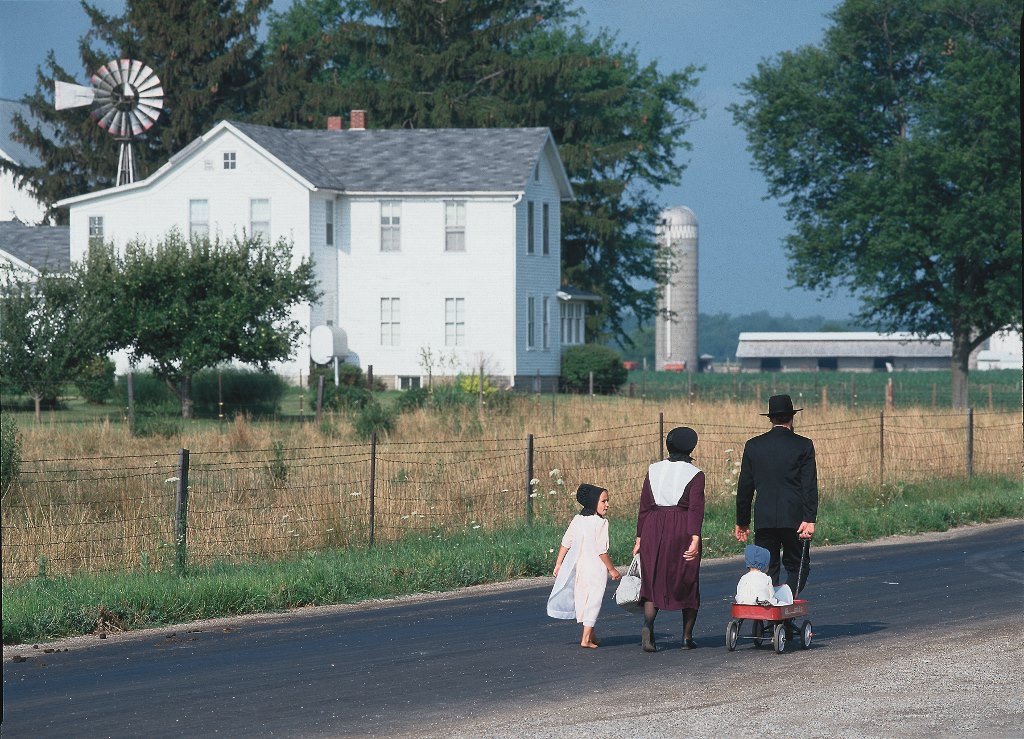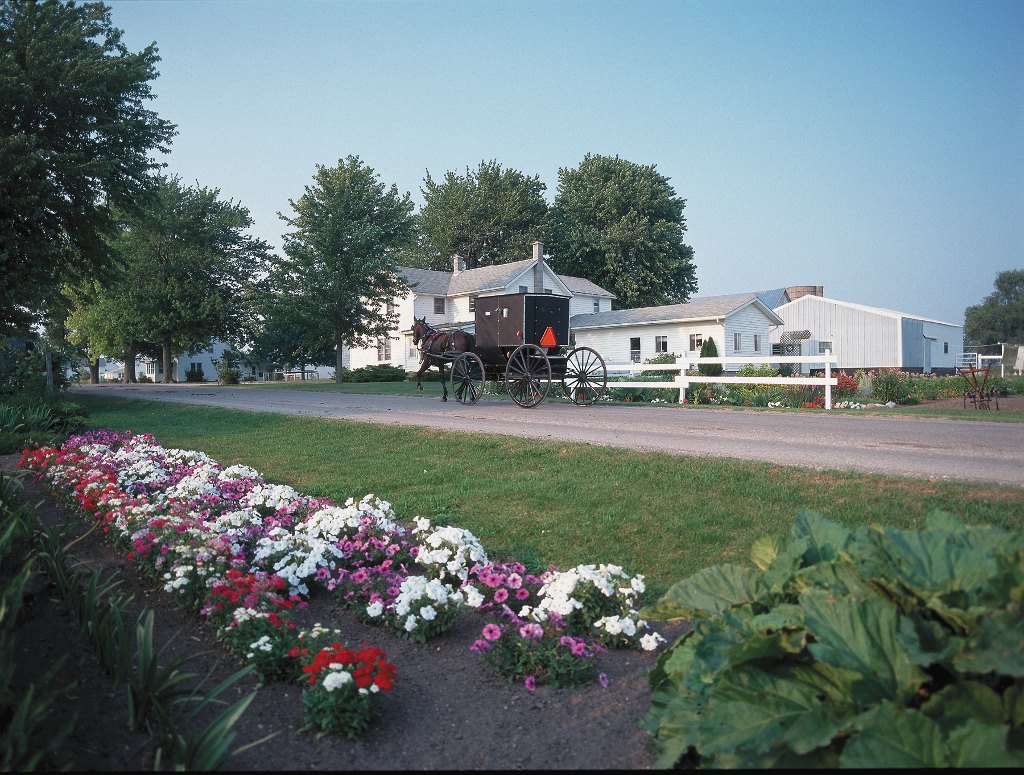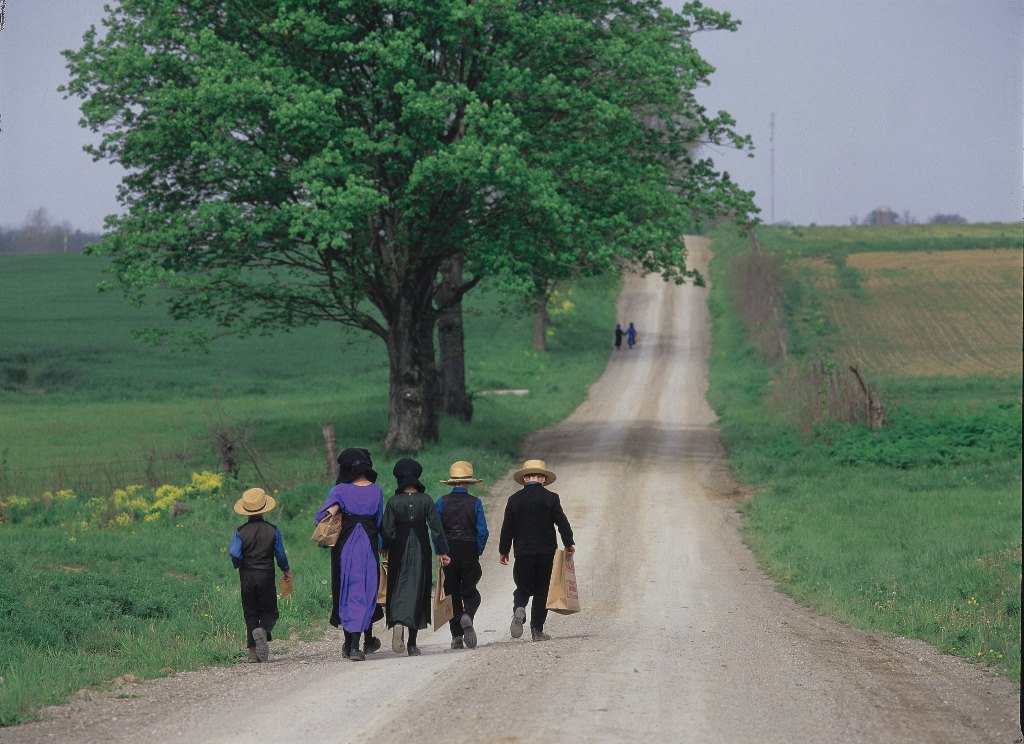
Part Two of Among the Amish in Indiana:
I live near a sizable Amish community near Kalona, Iowa, so I thought I knew quite a bit about Amish life. In Indiana, however, I learned that Amish culture is much more diverse than I realized.
“The communities here are sometimes called the ‘Fancy Amish,'” my guide said. “They tend to be a bit more liberal in how they relate to the outside world, in part because many of them have jobs that require a lot of contact with non-Amish people. Farmland prices are so high that it’s not possible for every family to support themselves in the traditional way.”
I wasn’t surprised to hear that many of these Indiana Amish work in stores, furniture workshops and other small businesses. But would you believe RV factories? The area around Elkhart manufactures about 80 percent of all the RVs sold in the U.S. Many of these enterprises employ Amish men, who are hard-working, highly skilled craftsmen.
Well, once I heard that, I had to take a tour of one of those factories (and as an aside, if you visit this part of Indiana, don’t miss Elkhart’s RV Hall of Fame and Museum, which is great fun and surprisingly interesting).
So there I was, in the Newmar factory that makes luxury motor homes, some of which retail for more than $1 million. And probably half the men working on the factory floor were Amish, with long beards, suspenders, and handmade clothes. When I say working, I mean working. The men practically ran between work stations, keeping up a pace that made me tired just watching them. Our Newmar guide explained that these are highly sought-after, well-paying jobs, and that the Amish workforce is a big reason for the success of the Newmar company. The men (for they’re all male, of course) work incredibly hard with great attention to detail.
The cognitive dissonance made my head spin. Amish men building luxury motor homes? Who woulda thunk it?
The Fancy Amish of northern Indiana blend with the outside world in other ways as well. While many live on farms, others live in the region’s small towns. We passed many modern-style homes that were obviously occupied by Amish families, for they had a buggy parked outside and dark clothes hanging out to dry. In these towns, Amish children often attend public school up until the eighth grade. And I was surprised to see many Amish people riding bicycles. I don’t recall ever seeing that in the Amish communities near my home.
Many of the variations in Amish culture are due to the fact that the Amish have a very decentralized church structure. Local bishops set guidelines on what is allowed and what is prohibited. If families disagree, they may join a district run by another bishop (though that may involve the severing–or at least the straining–of family and community ties).
The Amish relationship to modern technology is a delicate dance, one that is largely determined by these local bishops. Each new technology is met with a question: will this lead to a deterioration of our religious faith and community life? If it will, there are strict guidelines relating to its use. At the same time, the Amish recognize that compromises need to be made and they can’t live a nineteenth-century life in all ways. They don’t use electricity in their homes, for example, but most use bottled gas to operate stoves, refrigerators and water heaters.
The Amish relationship to cars is especially interesting, I think. The website Amish Religious Freedom explains the reasoning behind their prohibition:
By rejecting certain types of modernity and accepting others, some Amish appear to the outside world to be contradicting themselves — hypocrites. However, from the viewpoint of Amish culture, there is no contradiction. One of the more pronounced inconsistencies is the use of an automobile…although he may not own a car, a member may accept rides and willingly hires an automobile with a driver to transport him from place to place. There was little hesitation when the Amish decided no to car ownership. It would separate the community in various ways. If only wealthy members could afford it, the car would bring inequality. Proud individuals would use it to show off their status, power and wealth. Cars would speed things up dramatically, disrupting the slow pace of Amish living. So, they will use them but not own them, for then things will surely get out of control.

The Amish of northern Indiana clearly have more porous boundaries with the modern world than many of their brethren (i.e., those bearded Amish craftsman working in the RV factory). I wonder what the community will be like in 50 years. Will they diverge more from their fellow Amish or will they decide to pull back from the larger culture?
My visit to Indiana makes me think, too, of all the ways in which our technologies shape us in ways we don’t anticipate. I certainly don’t want to give up owning a car, but I’m uneasy about the ways in which some technologies isolate people from each other and the natural world. Instead of relating to those around them, for example, increasingly people bury themselves in their smart phones. When family members each heat up dinner in a microwave and then retreat to their separate TVs, something precious is lost. And when you drive a car to the store instead of bike, you miss the chance to savor the views along the way.
We would do well to heed the Amish example about being careful what technologies we adopt.















